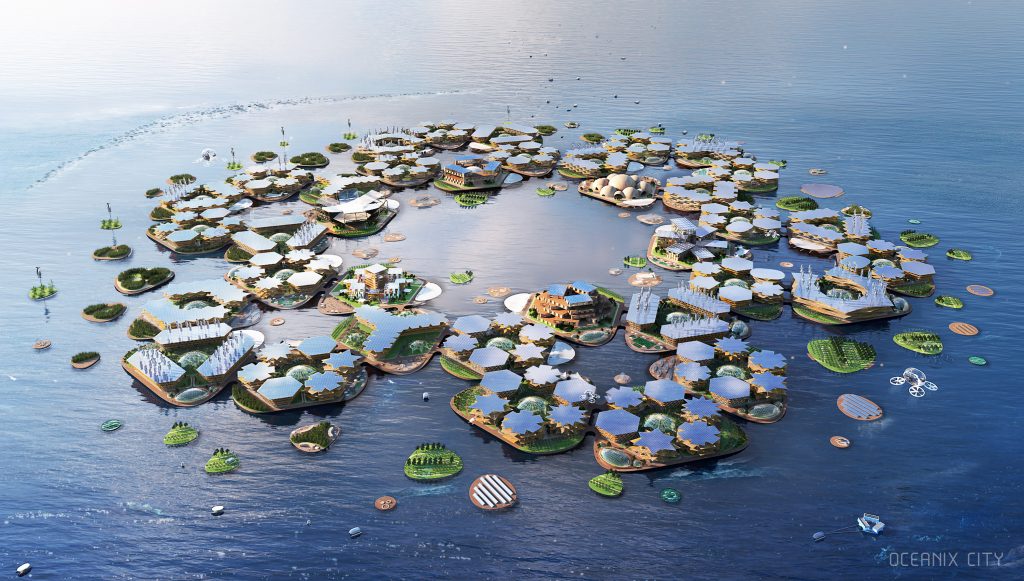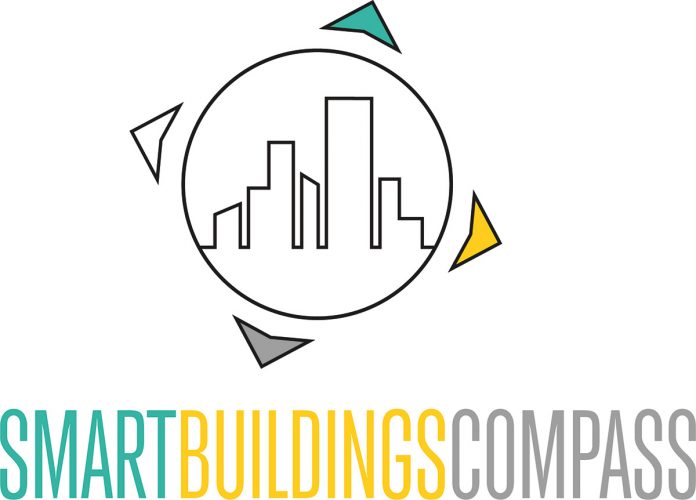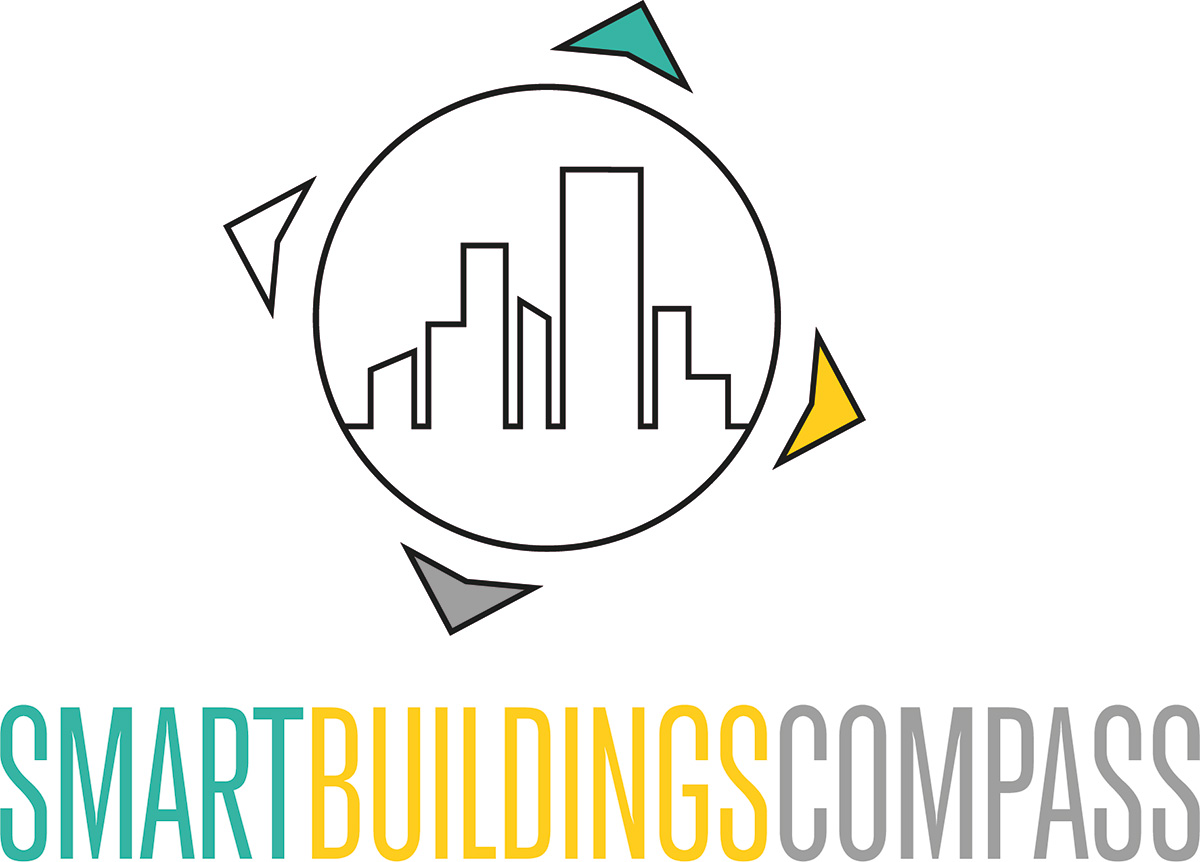So far, floating houses are mainly known from cities such as Amsterdam, where houseboats serve as photo motifs for tourists or an overnight stay is booked via platforms such as Airbnb as a unique experience. But soon this concept could become a reality on a much larger scale on the open ocean, as prototypes for futuristic-looking floating cities take concrete shape.
Driven by the fear for those places that are about to disappear from the face of the earth due to rising sea levels, many scientists are now trying to find viable alternatives. These are intended to provide an opportunity for people to live in harmony with water and respond to changing living conditions. The primary goal at the moment is therefore for these prototypes to make it out of the idea phase and ultimately into reality.
One promising concept, for example, is the “Oceanix-City” project by architecture and design firm Bjarke Ingels Group (BIG). Architect Bjarke Ingels emphasizes that “90% of the largest cities will be affected by rising sea levels by 2050 [werden]. The sea is our doom, but it can also be the future.”
Swimming community
Another example is “Dogen City,” a project by Japanese architects from the start-up N-Ark. Here, the focus is on modularly connecting residential platforms to create a floating community for up to 40,000 people. This city uses forward-thinking technologies that are designed to benefit from its proximity to the water and the floating subsoil. For example, housing can be moved within the city using sails, and food production is supported through regenerative aquaponics. The data center is located in the lowest of the three designated layers, virtually underwater, to ensure efficient cooling. This ambitious project is to be implemented by 2030.
However, the architects of the start-up “N-Ark” are not the only ones to address this problem. The Seasteading Institute also aims to create independent communities on open waters that enable self-sufficient living through the use of the latest technologies. This creates independent political regions with their own government and laws.
Self-sufficient cities
Like the Oceanix City project, the Seasteading Institute’s goal is to create an independent community on open water. There are different concepts for this, with all cities operating as self-sufficient political regions with their own government and laws. Sustainable use of resources and environmental protection are the focus here.

The concept was first proposed in the early 2000s by Patri Friedman, a grandson of Milton Friedman. With Peter Thiel, co-founder of PayPal, a major investor has been brought on board while the Blue Frontiers team , founded by employees of the institute and a former minister of French Polynesia, is responsible for the implementation of the floating cities.
In 2017, French Polynesia had also become a test partner. This self-contained region is particularly affected by rising sea levels. Nevertheless, the Seasteading Institute was not received without skepticism, as questions about environmental friendliness and economic viability were raised. There were also still some unresolved decisions. The individual modules planned should be squares of 50 by 50 meters or pentagons and must be coupled together to withstand the effects of the sea, such as the waves.
The question of energy supply is also open, since solar and wind energy alone would not be sufficient, wave energy is also being considered. Many other issues have also not yet been conclusively resolved.
Unfortunately, such projects are also always under a political or economic light. In 2017, for example, the project on Tahiti, the best-known island of French Polynesia, was temporarily postponed for political reasons, the Seasteading Institute announced.
There have been attempts to launch seasteading projects in other parts of the world as well, but these have not yet resulted in fully autonomous floating cities. Most of these projects are still in the research and planning phase.
Cruise ship as city
A slightly different concept of a floating city is the “Freedom Ship”. This is an ambitious concept for a giant cruise ship that will serve as a floating city. It will be equipped with a self-sustaining ecosystem and will house various facilities and apartments.
The Freedom Ship concept offers environmentally friendly additions to its technical concepts. This includes effective waste management systems, wastewater disposal systems, and methods for treatment as well as recycling. According to construction plans, the ship will integrate about 100 diesel engine systems for its propulsion system to be able to steer it well. However, its equipment costs amount to one million dollars.

However, construction of the Freedom Ship was temporarily halted for a variety of reasons, mainly due to concerns about the ship’s viability. Although some maritime experts are confident that the ship can succeed, the financial aspects remain a significant obstacle. Nevertheless, it is a promising concept that could possibly play a pioneering role in this field in the future.
Outlook for the future
The vision of a world where people live in harmony with changing environmental conditions on the water is becoming increasingly tangible through pioneering projects like Dogen City. These innovative approaches show that the sea is not only a threat, but can also be a source of inspiration and solutions for the future. It is crucial that these cities are self-sufficient, as they need their own infrastructure for electricity, water, sewage and waste disposal away from the mainland. Once these aspects are taken into account, the concepts offer the possibility of independent living, which has become increasingly important in recent years. Numerous factors, including technology, financing and political acceptance, play a crucial role along the way.






